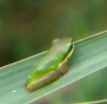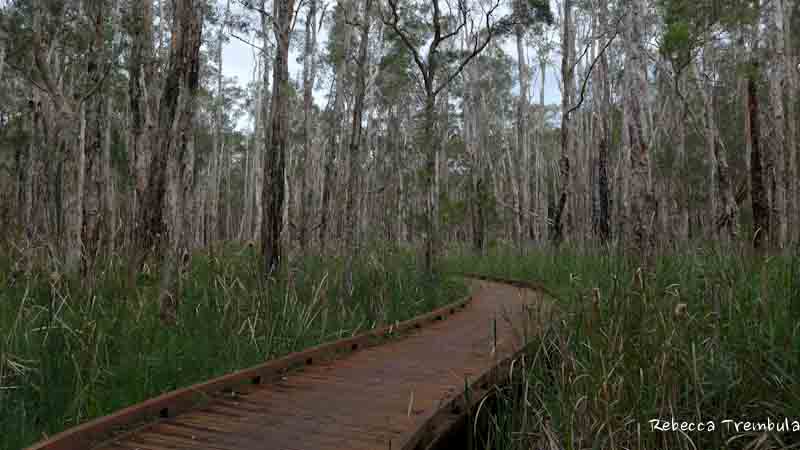
Today I went to the Coombabah Lakelands Conservation Area. It's a wonderful place with trails for walking or bicycling through wonderful wetland forests.
"Coombabah" has multiple possible meanings, one of which is the "home of the turtles." I've never seen a turtle there, but it wouldn't surprise me. Those cattails and grasses along the trail are full of life!
"Coombabah" has multiple possible meanings, one of which is the "home of the turtles." I've never seen a turtle there, but it wouldn't surprise me. Those cattails and grasses along the trail are full of life!

My favorite trail begins with a boardwalk through a paper bark tree forest. I didn't grow up around paper bark trees, so I wonder if their effect will wear off at some point. I hope not! I love how it feels to be surrounded by them. So magical!
I was seeking insects (a common theme in my photography). On a previous visit I got some gorgeous dragonfly photos. This visit's surprise was the hundreds of little tiny frogs, perching with their legs tucked in like they were all waiting patiently. Waiting for what? Maybe they are waiting to be turned into a story! :-)
I did find some insects, including this little fellow who was only a centimeter (a bit less than 1/2 inch) long:
I was seeking insects (a common theme in my photography). On a previous visit I got some gorgeous dragonfly photos. This visit's surprise was the hundreds of little tiny frogs, perching with their legs tucked in like they were all waiting patiently. Waiting for what? Maybe they are waiting to be turned into a story! :-)
I did find some insects, including this little fellow who was only a centimeter (a bit less than 1/2 inch) long:
A TUSSOCK MOTH CATERPILLAR
After a couple hours of searching, I'm no closer to a satisfactory identification other than that of "tussock moth caterpillar," a category that covers a variety of caterpillars all over the world (all generally hairy with varying numbers of tufts of denser and longer hair) and the moths they grow into (ranging from snowy white to patterned brown). The best bet I can come up with is that it is a Painted Apple Moth's caterpillar (teia anartoides).

The problem is that this identification is based on one photo. They do match. The two red dorsal glands, the problematic beige spots (no other photos seem to include them), the horn-like tufts...it's all there. But that's the only place it is.
Everywhere else, including in the most of the other photos I encounter also identified by Don Herbison-Evans as Painted Apple Moth caterpillars, the Painted Apple Moths seem honey-colored with pale tufts at the start of their abdomen. Four pale, cream-colored tufts seem characteristic, not the two dark black tufts you can see in his side profile.
So the identification isn't definitive...but it's better than being nameless. If anyone as a second confirmation of his identity (or an alternative identity for him), please let me know!
Oh, and if you happen to see one somewhere, remember what they say about "wooly caterpillars"--leave them alone unless you are willing to risk being itchy and rash-covered.
Everywhere else, including in the most of the other photos I encounter also identified by Don Herbison-Evans as Painted Apple Moth caterpillars, the Painted Apple Moths seem honey-colored with pale tufts at the start of their abdomen. Four pale, cream-colored tufts seem characteristic, not the two dark black tufts you can see in his side profile.
So the identification isn't definitive...but it's better than being nameless. If anyone as a second confirmation of his identity (or an alternative identity for him), please let me know!
Oh, and if you happen to see one somewhere, remember what they say about "wooly caterpillars"--leave them alone unless you are willing to risk being itchy and rash-covered.
Links:
- The photo identification is based on from Sportsman Creek Conservation Area.
- Lots of interesting information about the life-cycle of Tussock Moths (for example, did you know that the females don't ever get to go fly anywhere?)
- Don Herbison-Evans and Stella Crossley's identification guide for the Painted Apple Moth.




 RSS Feed
RSS Feed